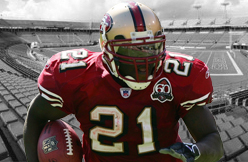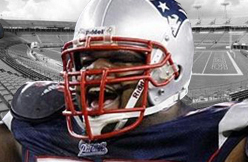If there is music thumping and sometimes spraying Iggy Azalea’s latest in the Cardinals’ clubhouse, it’s Jon Jay’s speakers at work. He is the self-appointed and uncontested clubhouse DJ. He popularized the term “Memphis Mafia” for his generation of Cardinals and even had T-shirts made. The nascent tradition that is High Socks Sundays, where players tug their pant cuffs up their calves to show the ringtails of their stirrups — he started it and coined the hashtag, “#highsocksunday”. He had T-shirts made for that, too.
He bats second and sometimes seventh. He plays center and sometimes right. He is the Cardinals’ player rep to the union, their shoe fashionista, an unofficial ambassador for Miami, and Friday he teased his hair as he waited to stand in the background of a music video being shot at Busch Stadium by Yadier Molina’s record label. Jon Jay has many roles for the Cardinals and his career shows that midway through the season he annually claims one more.
Starter.
“It’s unfortunate that he’s had to prove himself every single year except for maybe last year (2013),” said infielder Daniel Descalso, a close friend and member of the “Mafia.” “It seems like people always want to write him off. He always shows up. He’s the same guy. He puts up the numbers, goes out there, and does a lot of the things that help us win. That’s despite what people may say or think.”
More than what they said or thought, it’s what the Cardinals did this past winter that put Jay, the team’s incumbent center fielder, in a familiar position — challenged. The Cardinals traded David Freese and Fernando Salas for outfielders Peter Bourjos and Randal Grichuk. Bourjos, a gifted defender, was a candidate for Jay’s position and Grichuk, a power prospect, was going to man center in Class AAA. With one trade, Jay lost a member of the “Mafia,” saw the true cost of a rising salary, and became bracketed by the potential present and future of his position.
How he has responded so far this season is familiar. For the third time in his career he’s emerged from a duel with a starter’s playing time. He took a .305 average into this weekend and had started 20 of the Cardinals’ previous 26 games.
“For me, it’s nothing personal,” Jay said, “It’s just a reason to work.”
“What we’ve seen around here is better than what he gets credit for,” manager Mike Matheny said. “As an organization we always want to figure out how we can get better and how we can complement what we have and the opportunity was there to bring in an exciting player like Peter. But I think everybody was running in the direction that we’ve turned the page (on Jay). I didn’t think that was fair.”
Jay, 29, started 21 of the team’s first 41 games before a surge that put him back, regularly, in the lineup. Entering Friday’s game against Philadelphia, Jay had hit .342 (25-for-73) over his previous 23 games. He turned production in those games into a recent run as the team’s No. 2 hitter, where Jay had a single and was hit by a pitch Friday.
He has wrested starts away from Bourjos and ascended to a primo spot in the order.
“The answer is yes it’s been beneficial — in two ways,” general manager John Mozeliak said. “One, for his own personal career, and he’s showing he’s a productive player. But, two, through this whole team concept we have is about getting opportunities. He is in the first third of the lineup and he’s been able to produce in a demanding time. He’s obviously had a good few weeks. I hope we continue to have production out of center field.”
The few good weeks hint at a contour that Jay has followed before. From 2010 to 2013, Jay started 54.0 percent of the Cardinals’ first-half games. During those same four seasons, he started 82.1 percent of the club’s second-half games. In 2010, his play made it possible to trade Ryan Ludwick for pitcher Jake Westbrook. In 2011, it was Jay who had pushed for playing time in center before the Cardinals sent Colby Rasmus to Toronto in the deal that defined a World Series championship team.
In 2012, Jay was a regular but won the open leadoff job in September and hit .310 with a .370 on-base percentage.
“I think that’s all coincidence,” Jay said.
A former teammate said “too often the media is quick to dismiss the importance of a player like Jay and what it means to be on winning teams.” Jay has been a constant for this current run of contending clubs. His 160 at-bats in the postseason are the fourth-most for the Cardinals since 2011’s run, and he’s one of two players remaining on the club who have played in all of the team’s playoff games since 2011. Molina is the other.
Yet, the Cardinals looked to replace Jay.
“This is probably the most frustrating spring of Jon’s career just from the fact that it looked like he was being painted into a corner,” Matheny said. “As much as we were trying to tell him differently, the opportunities were saying a different story.”
He entered last season as the unquestioned starter and struggled, reworking his swing on the job and slogging through the slump that caused. He revived at the plate in the second half with a .311 average and finished with 67 RBIs.
His defense lagged — a career-low minus-8 Runs Saved, per Baseball Info Solutions — and as the Cardinals sought an upgrade that play gave them an opening.
“I felt that last year was the year that is going to help me for the rest of my career,” Jay said. “Dealing with stuff. Learning a lot. I had to figure out a way to deal last year with not playing the way you’re capable of playing. That was frustrating.”
The shorter, simplified swing that emerged from that frustration is an asset. It’s something he can repeat, even with sporadic playing time in this season’s first month. He said this winter he had “a better plan” during his cage work. He would work smarter, not longer in the cage. The winter held another lesson for him as well. With the trade of Freese, Jay could see a friend leaving the clubhouse and, if he wanted to look for trends, his potential future.
A year ago, Freese sat in the Cardinals’ clubhouse and assessed his situation. Playing toward a second shot at arbitration and a raise, Freese said he could see Matt Carpenter inheriting his job, as Carpenter said, and “understood with our farm system there are a lot of options out there.” Jay is surrounded by them.
Bourjos. Grichuk.
Oscar Taveras has played center. James Ramsey is blossoming.
Jay received a one-year, $3.25-million contract for this season to avoid an arbitration hearing. He’ll be due another significant raise after this season and could price his way out of the Cardinals’ model, especially if, yet again, they seek a challenger for center. The same vice of progress pinched Skip Schumaker and Freese before him. Jay remains the player rep because the business of the game fascinates him, but it also gives him an understanding of its reality.
“It happens on every team,” Jay said. “Things come out of nowhere that you don’t expect. ... The lesson is you have to prove yourself everyday.”Right now, the clubhouse has given him control of the iPod and his production has him taking control of a role.
He does get a say in how long his music keeps playing.
“The bottom line is when you build a team it’s 25 guys and everybody is going to contribute and everybody is going to have to pitch in,” Jay said. “I’ve said this every year: In October, if we’re in the playoffs, it means I had a pretty good season. I contributed. I have the same goal this season. If when we look up in October and we’re in the postseason that means everybody in this clubhouse did their part, everybody on the roster did their part. We did what we’re supposed to do.”

(stltoday.com)

























